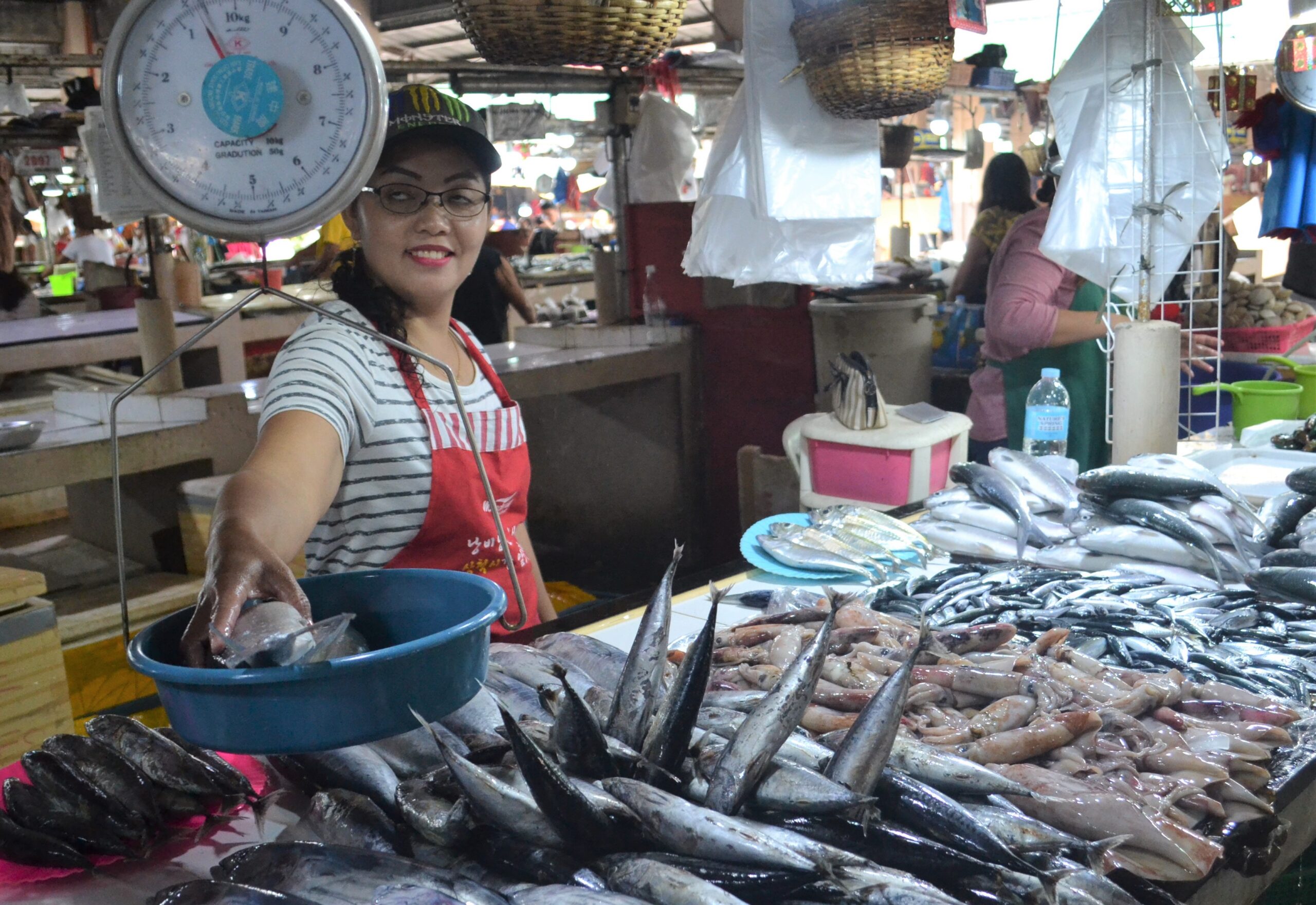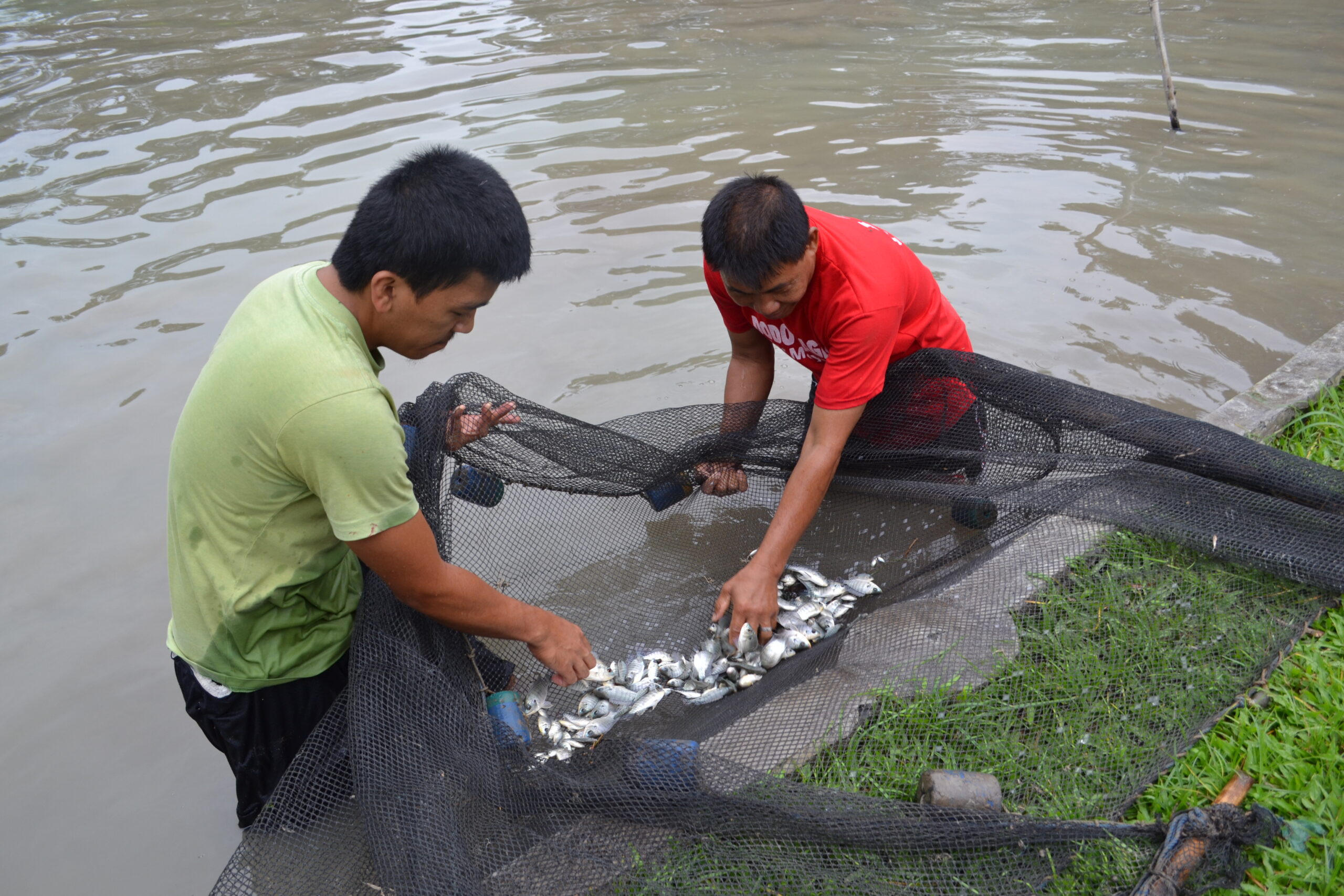Text and Photos by Henrylito D. Tacio
The country’s food security will be greatly affected if the continuous increase of greenhouse gases in the atmosphere is not curbed. That is the assessment of a group of Filipino experts to localize science-based climate action.
Rice and fish are the staple foods of Filipinos, and both are most vulnerable to climate change, according to the National Panel of Technical Experts (NPTE) formed recently by the Climate Change Commission (CCC).
During a recent media briefing convened by the Department of Finance (DOF) via Zoom, the salt intrusion has been cited as one of the effects of climate change, defined as “a long-term change in the average weather patterns that have come to define Earth’s local, regional and global climates.”
In the island province of Bicol, a study was done on salt intrusion, and it has been found that it could jeopardize food security. “The immediate effect of saltwater intrusion is more of the reduction in the production of rice,” says Dr. Nathaniel Alibuyog, an agricultural engineer specializing in land and water management.
Rice is the staple food of Filipinos. On average, Filipinos consume 114-120 kilograms of rice per capita per year. That’s almost double the world average of 65 kilograms per capita per year, according to Dr. Eufemio Rasco, Jr., former director of the Philippine Rice Research Institute.
Engr. Merriam M. Santillan, dean of the College of Engineering and Geosciences at Caraga State University in Butuan City, agreed with the observation of Dr. Alibuyog said that salt intrusion can be attributed to excessive groundwater extraction and sea-level rise. “Studies show that saltwater intrusion has significant effects on the growth of rice as it decreases the protein content of rice, among others,” she pointed out.
Dr. Ramon Lorenzo R. Guinto, a staunch planetary health advocate, and practitioner reaffirmed the negative effects of saltwater intrusion and added, “In terms of health impacts, we did a very rapid review of evidence from around the world, and out of nearly 30 papers, we have seen, there is already growing evidence about the impacts of intake of water high in salt.”
Based on his study, Dr. Guinto said that water intake high in salt could lead to several health problems, including hypertension, miscarriage, problems among pregnant mothers, and kidney stones. “These are just some of the effects that we should actually be monitoring,” he said.
Most Filipinos are not so concerned about biodiversity loss, another consequence of climate change. “A rise in the temperature can be detrimental to the area, some will move out of the area,” says Dr. Wilfredo L. Campos, chair of the Division of Biological Sciences at the University of the Philippines Visayas.
Again, biodiversity loss boils down to food security, citing the current situation in the open seas of Mindanao and Tawi-Tawi. “(These waters are) one of the most productive areas for fishing because of its oceanography,” Dr. Campos explains. “Thus, any changes to the oceanography will affect the species, fishery production and the industry sector as a whole.”
Right now, the weather in Tawi-Tawi is “relatively stable.” There have been no recorded typhoons for the past year that can damage fisheries. But as far as biodiversity is concerned, “illegal fishing is still rampant, especially in remote areas,” said Dr. Richard N. Mualil, a marine scientist and director of Continuing Education and Extension Services at the Mindanao State University in Tawi-Tawi.
Fish shortage is alarming as fish is the country’s second staple food. On average, every Filipino consumes about 98.6 grams of fish and fish products, according to the Food and Nutrition Research Institute.
Most of the biodiversity loss is taking place in tropical forests. Experts claim the country lost most of its forest in the past 50 years. In Mindanao, most of the remaining forests can be found in the regions of Caraga and Davao.



In recent years, flooding has become a big problem in most parts of the country. A case in point is Pampanga, whose river basin is the second largest river in Luzon. As such, flooding in the area can be inevitable. In July last year, “more than 20 barangays were submerged in floods due to rains brought by the southeast monsoon that was strengthened by Typhoon Fabian.”
The NPTE members said that climate change impacts also play a key role in the phenomenon. “Only 37 percent of the river basin is classified as timberland or forest land, so that is one thing that should be looked into, for the possible reason of flooding in Pampanga,” Engr. Santillan said, adding that restoring the channel width of the river, including the tributary rivers, and letting flood waters occupy their floodplains can help.
“Deforestation can be minimized and resolved through an ecosystem-based solution if we provide the local government units the responsibility and space to really take part, providing them the authority,” suggests Dr. Eduardo O. Mangoang, a professor and director of the Regional Climate Change R&D Center of Visayas State University in Baybay, Leyte.
Logging policies also need to be revisited, especially because selective log bans perpetrates illegal logging, adds Dr. Susan P. Mercado, an international public health and food security expert.
Those were some of the issues raised during the Zoom meeting. Actually, the NPTE has identified the top 10 hazards the country faces as a result of climate change. These are rising sea levels, coastal erosion, flooding, increasing frequency and severity of tropical cyclones, extreme rainfall, extreme drought, temperature increase and rising urban heat index, wind patterns, climate-influenced diseases, and biodiversity loss.
All these hazards, the experts claim, “require urgent climate action.” But “it will be difficult to pinpoint which issue is a most urgent hazard per region as it depends on the area’s topography and geography.”
The Institute for Economics and Peace (IEP) has singled out the Philippines as “the country most vulnerable to climate change.”
“Between 1958 and 2014, the Philippines experienced a 0.62°C increase in yearly average mean temperature, with the rate of change increasing over time,” said IEP in its 2019 report.
The Philippines is among those countries which has contributed to the emission of GHGs like carbon dioxide, methane, nitrous oxide, and industrial gases (hydrofluorocarbons, perfluorocarbons, sulfur hexafluoride, and nitrogen trifluoride).
Dr. Emma Porio, a professor of sociology at the Ateneo de Manila University, said “the Filipinos’ consumption-driven lifestyle” and the fast rate at which the planet is consuming natural resources as the reason why the global weather is changing rapidly.
Citing one author of the United Nations’ Intergovernmental Panel on Climate Change (IPCC), she said that “at the rate we are consuming the Earth’s resources, and extracting, we would need three Earths to sustain our lifestyle as of now.”
Rising sea levels are one of the most feared effects of climate change. “Rising sea levels will inundate different regions in varying degrees,” the NPTE says. “This means that sea-level rise will affect or flood some areas more severely than others.”
As such, NPTE suggests that a consolidated database of studies should be done “to come up with analytics for different impacts on a specific location.”
Engr. Santillan reported that a rapid risk assessment was done on sea level rise in Dinagat, Siargao, Bucas Grande, and Surigao del Norte.
For half a meter rise in sea levels, the study found out, Siargao Island can be inundated by 30%. In comparison, the same measure of sea-level rise can inundate Dinagat Island by only 6%.
During the Zoom meeting, one issue that was raised was regarding the country’s draft national policy for nuclear energy. Should it be included in the country’s energy mix? participants asked.
Although the NPTE still did not have an official stand on the issue, some experts offered their insights.
Dr. Jihan H. Adil, environmental planning and engineering expert specializing in wastewater and climate change from Zamboanga City, believed the country is ready to include nuclear energy as studies have shown that 88% of accidents are caused by acts of people, 10% by unsafe actions and 2% by acts of God.
Thus, a well-designed, correctly located, and properly operated nuclear facility will not only contribute significantly to the reduction of carbon emission from the energy sector; it can also contribute to economic development.
Climate change could have an impact on the country’s energy supply, along with increasing energy consumption due to increased demand for air conditioning.
The CCC is the principal policy-making organization on climate change issues, as established by the Philippine Climate Change Act. It said that NPTE Fora are regularly organized to foster knowledge exchange and stimulate discussions between and among the government, scientific community, and the general public in recommendations in improving climate-change-related policies and practices.

